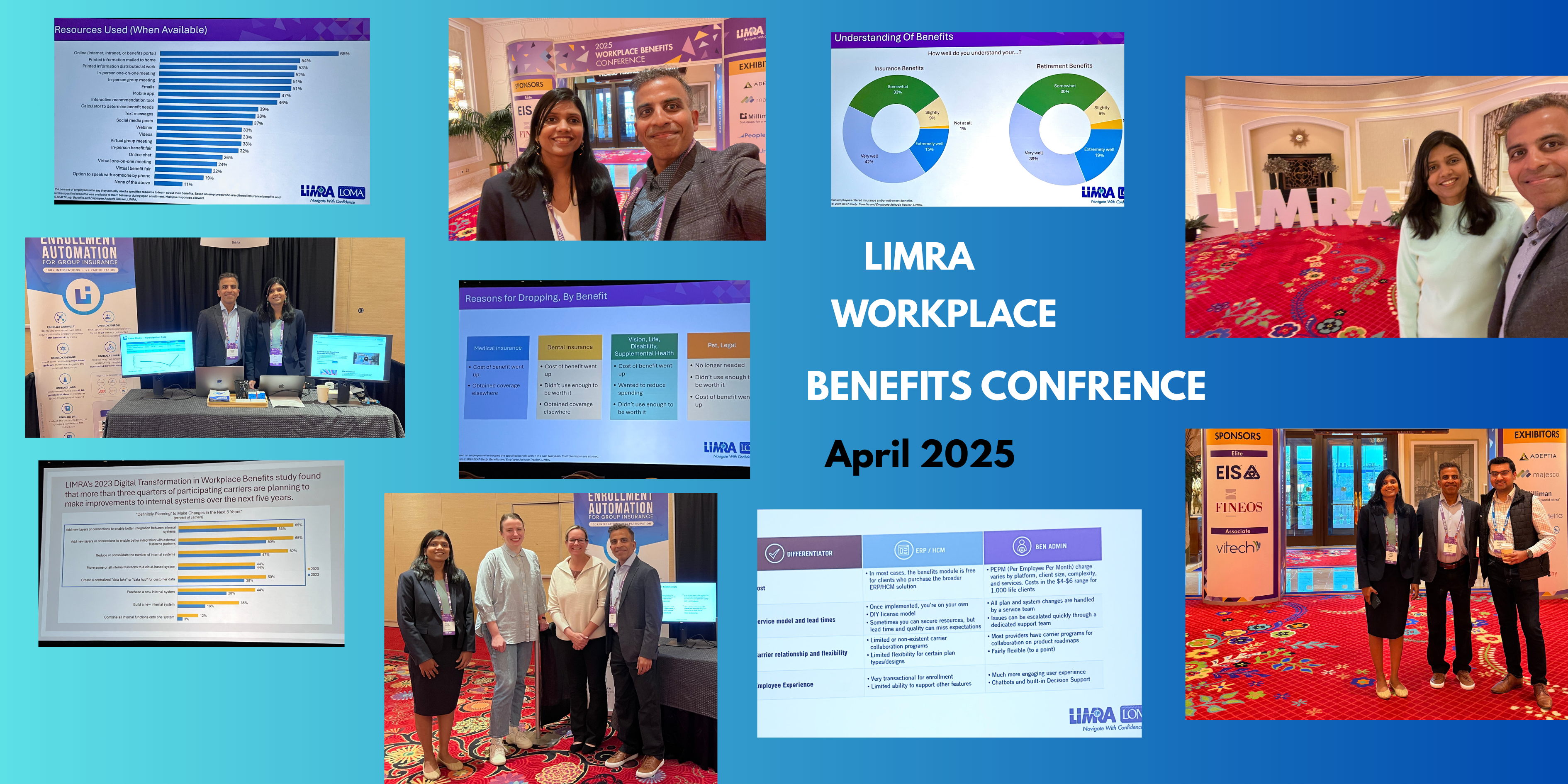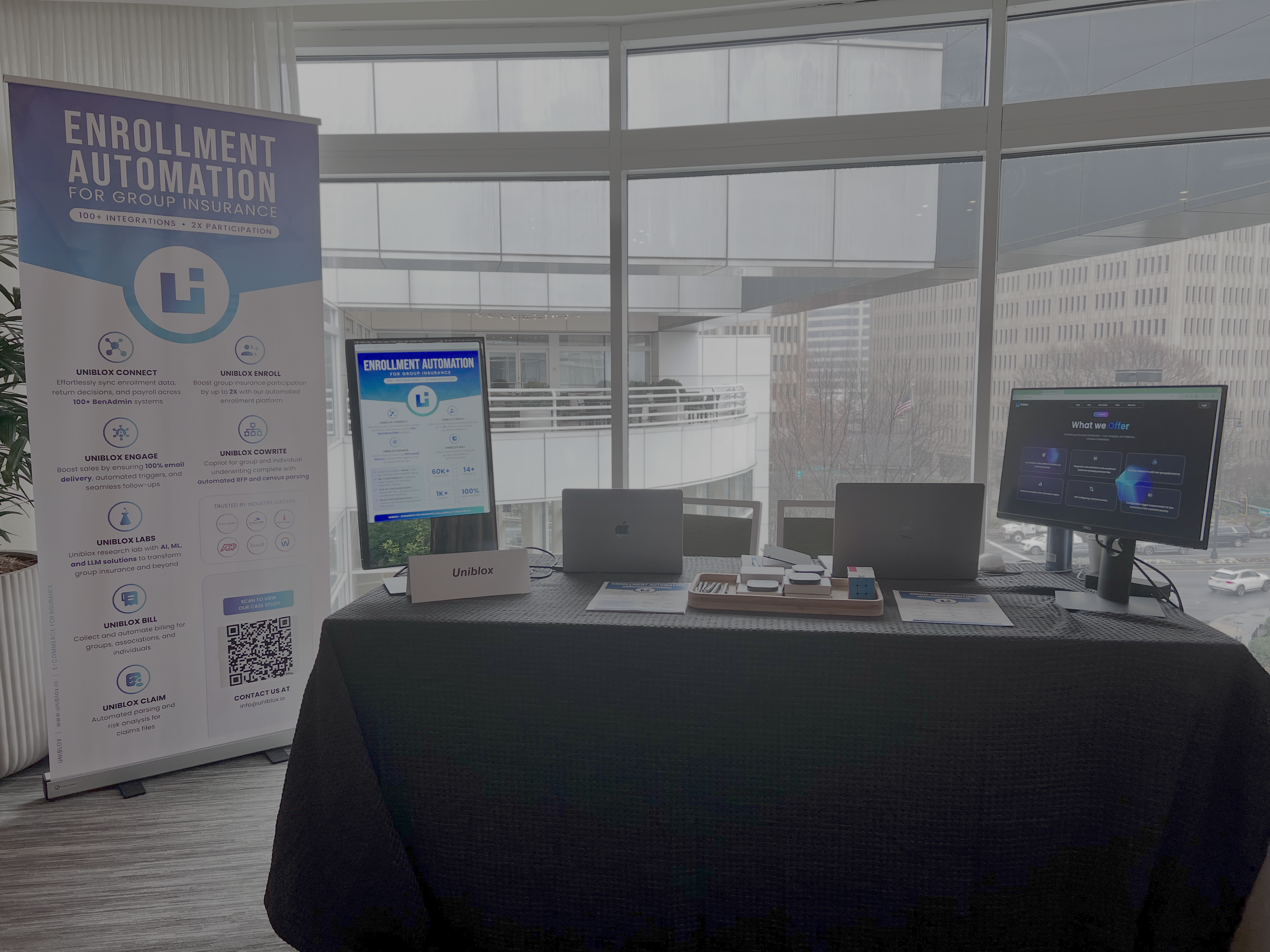LIMRA Workplace Benefits 2025 Recap - Pathway to Growth
Last week, the Uniblox team had the privilege of attending the LIMRA Workplace Benefits Conference, one of the industry’s premier gatherings of insurers, brokers, benefits administrators, and technology innovators. Held in Boston, this year’s event centered around an essential theme: “Pathways to Growth.”
And growth—of systems, strategies, and relationships—was exactly what the industry showed up to explore.
From powerful keynotes to hallway conversations, one message echoed throughout the conference: technology isn’t optional anymore—it’s strategic.
👥 A Strong Presence on the Floor
Uniblox had a booth at the heart of the exhibit hall, where we connected with dozens of carriers, brokers, and partners throughout the event. From spontaneous demos to deep-dive conversations, our space became a hub for discussions around AI, integrations, automation, and solving real-world workflow challenges. The energy was palpable—and we were proud to showcase how our platform is simplifying the journey from census to enrollment.

🧩 The Systems Are Slick—But Are They Connected?
One of the most resonant insights came from a panel featuring broker feedback. While today’s platforms appear “slick on the surface,” they often falter when asked to go beyond the basics. System differences and lack of connectivity still pose fundamental challenges: from unclear system-of-record issues to fragmented data and non-scalable workflows.
We’ve long believed this, and LIMRA reinforced it: premium experiences require tight integration and operational harmony across ecosystems—not just flashy UIs. That’s why Uniblox focuses on building composable, API-driven platforms with embedded AI that parse and normalize data across hundreds of formats, enabling clean, actionable handoffs between quoting, enrollment, and billing systems.
📄 “Journey of a Census File” — Our Demo Story
We had the unique opportunity to present to the LIMRA Workplace Benefits Committee, where we walked through the real-world challenges of handling census data in group insurance. We shared what we call the “Journey of a Census File”—from messy emails and zipped folders to fully structured and validated input.
To solve that, we’ve built agentic AI models trained on thousands of real-world files that automatically extract, validate, deduplicate, and structure census data—turning it into a reliable foundation for underwriting and enrollment.
But the journey doesn’t stop there.
Uniblox enables carriers to kick off enrollment during the pre-enrollment phase, powered by AI that predicts and fills in gaps in the census, applies business rules, and integrates plan designs. During the enrollment period, our platform ensures clean, deduplicated data is consistently synced across HRIS, BenAdmin, and carrier systems. After enrollment closes, we clean up edge cases, reconcile records, to avoid delays or billing mismatches.
It’s a continuous loop—not just parsing a file, but orchestrating the entire lifecycle of enrollment data so that underwriters, administrators, and implementation teams stay aligned and in control.
📈 From Quote to Enrollment—And Beyond
What set our conversations apart was the ability to demonstrate how Uniblox closes the loop between quoting, plan design, enrollment, and post-sale data exchange.
Whether we were showcasing:
- Our native Workday and ADP integrations
- Real-time enrollment reporting
- Built-in EDI with major carriers
…carriers and brokers alike saw what we mean by “eCommerce for insurance products”: seamless workflows, instant feedback loops, and zero handoffs lost in translation.
💬 Conversations That Matter
We were thrilled to reconnect with old partners, meet enthusiastic prospects, and hear from leaders who’ve been in the trenches of this space for decades. Some takeaways that stuck with us:
- “The future of benefits isn’t one-size-fits-all.” Personalization and flexibility will define the next decade.
- “Meeting customers where they are” means embracing complexity and solving it elegantly.
- “Distribution innovation must be tech-led, but human-centered.” Tools must empower—not replace—the professionals driving this space forward.
🚀 What’s Next?
The LIMRA Workplace Benefits Conference reminded us that building the right pathways to growth means more than scaling systems—it means solving for the real-world complexities of data, distribution, and decision-making.
As we continue collaborating with carriers and brokers, our goal remains simple: remove the friction from the quote-to-enroll process, and empower every stakeholder with better tools, cleaner data, and more control.
We’re grateful to LIMRA and all the incredible professionals we met in Boston. We left inspired, energized, and more certain than ever that the future of insurance distribution is already here—it’s just not evenly distributed yet.
Together, we’re making seamless, intelligent distribution the new standard.


